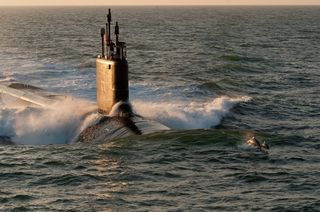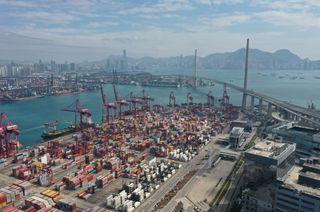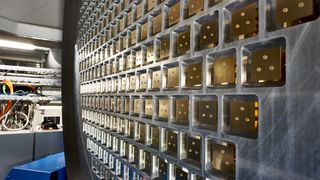Australia is a small but effective player in the civil and military space domain.
Back when I was Defence Minister in the 1980s it was the platforms in the land, sea and air domains that dominated strategic thought.
It was possible to see space systems emerging and likewise cyber. The Defence Strategic Review comprehensively brings together the five domains to fashion the national defence. It is clear we have to prioritise.
We have an ally with massive space technological capacity. It is now more willing to allow us onto its platforms, engaging allies in a new level of collaborative endeavour.
That that was a desirable prospect became clear in the 1980s. Our value was established in the 1960s when it was clear that the satellite systems underpinning most facets of American military endeavour required southern hemisphere installations. In the 1960s our geographical significance, and hence continuing leverage, was made clear with the establishment of Joint Facilities at Pine Gap, Nurrungar and North West Cape. They have in the last decade been added to by other installations (also at North West Cape) linked directly to monitoring, among other functions, threats posed to satellite systems by space based junk.
It was in the 1980s that the functions of those facilities were effectively merged into the Australian order of battle. Both Pine Gap and Nurrungar saw the incorporation of a large number of Australians into all elements of their operations. We also obtained the right to occasionally use a Pine Gap controlled satellite for our regional purposes. Nurrungar has been rendered unnecessary, but its functions as a redundant capacity now, have been shifted to Pine Gap. The 1991 Gulf War has been labelled the “first space war.” The veil of an aspect of our role was lifted by then Defence Minister Robert Ray, by his informing the Senate of Nurrungar’s role in alerting Israel to an Iraqi missile attack.
An excellent publication laying out the evolution of our alliance collaboration – “The space between alliance and self-reliance” by Dr Tristan Moss of the United States Studies Centre – is essential reading.
While not yet at the pinnacle of space technology, we are recognised for our niche excellence, particularly in areas synergising with artificial intelligence and remote sensing. We are engaging with space as both an enabler and as an industry in and of itself. On the one hand, our prime economic sectors, like iron ore production, are already major beneficiaries of space-enabled technologies, operating without intervention. On the other hand, we are poised to become more influential with the extraction and processing of critical minerals essential for the construction of advanced technologies such as satellite and communication systems.
Space cannot be an afterthought in a five-domain warfare strategy; it is as crucial as land, sea, air, and cyber.
Satellite guidance, earth observation intelligence, and communication are not mere conveniences but essentials; particularly as emerging threats in our region amplify the need for truly military-grade, cyber-secured, and redundant systems to ensure we can survive the intensity of any counterspace threat.
Our alliance with the US is fortified through our shared space endeavours. These collaborations are not merely strategic alignments but are foundational to our joint security architecture. Space capabilities are integral to this partnership, enhancing our interoperability and collective defence initiatives. We can’t, for example, target our long-range missiles against moving targets without accessing American systems.
In crafting a future where space is a co-equal domain, the government will continue to invest in space technology. Space cannot be an afterthought in a five-domain warfare strategy; it is as crucial as land, sea, air, and cyber. Our government’s commitment to investing in an advanced and resilient military satellite communications project, JP9102, is a clear indicator of this understanding.
The role of defence primes in developing a sustainable Australian space industry cannot be overstated. Companies like Lockheed Martin exemplify the role that defence primes play in developing a sustainable Australian space industry. They don’t just invest; they cultivate local expertise and sovereign capabilities through relationships that often extend beyond any one program. Small and medium enterprises are among those that have benefited from these endeavours, exemplifying how Australian firms are excelling and integrating into the niche high-technology space sector.
This privatised, collaborative model is what I envisioned as Defence Minister as we did Defence industry reform – Australian companies learning from primes, scaling their operations, and thriving amid high technology.
For researchers, the contribution is equally vital. Their partnerships with industry supporting the realisation of sovereign capability are essential in propelling our space ambitions. We must foster innovation so that Australian inventiveness can contribute meaningfully to this domain.
The space domain is integral to ensuring Australia’s national interests are advanced and protected. Government, industry and researchers must continue to work in concert so that our future as a nation is written not just on Earth, but in the skies above.





